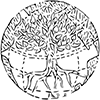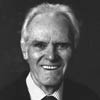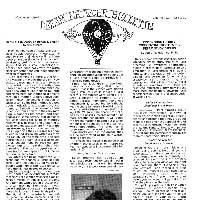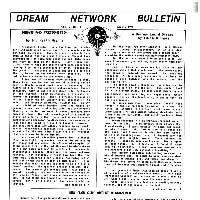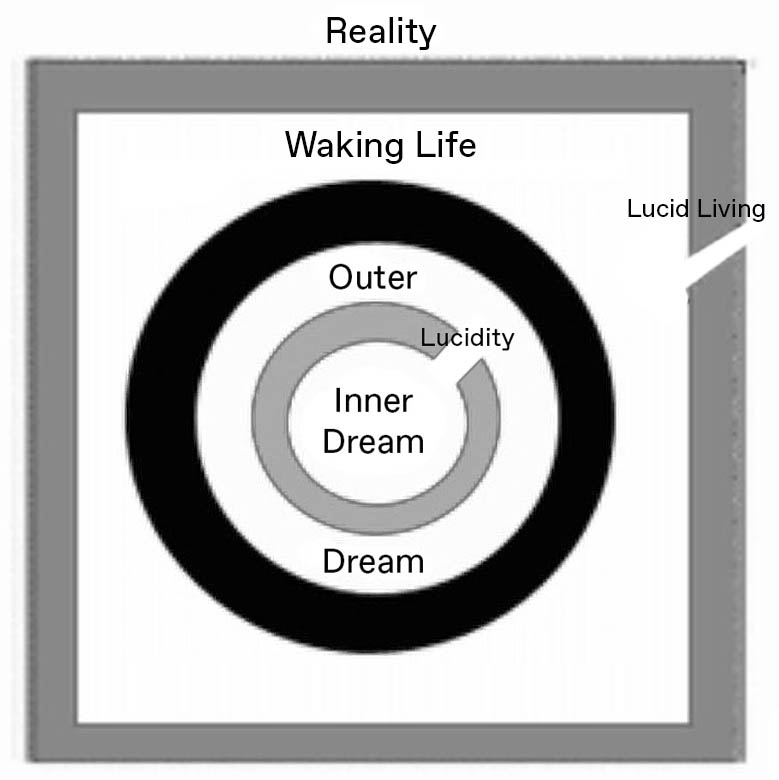In dealing with computers and computer access, there has been much discussion about the "haves" and the "have-nots". Those who have had computer access have had a vast world of knowledge that was available to them.
I feel a parallel situation exists in the realm of dreamwork: there are those who have experienced the power of working with dreams and those who have not. I feel the biggest challenge that we have is to find ways to introduce and encourage the have-nots to take the plunge and join the haves. I feel this effort needs to be on a one-to-one or one-to-many basis. But we, the privileged haves, need to explain why dreamwork can be so powerful and helpful.
For the have-nots, the subject of dreaming and dreams is often confusing. Bob Haden recently commented that people frequently dismiss dreams "because they are unfamiliar with the dreamworld and don't know what to do or say, much less sense that there is usually gold in this metaphorical message from the divine". (Dream Network 21.3 p.39). I agree.
I think we can take several steps to help the have-nots to become engaged with their dreams. The most common questions I am asked about imagery involve being pursued or threat of death. Explaining that these metaphors can relate to a call for change in one's life may allow the dreamer to be more comfortable with the dreaming process and therefore ease their exploration of possible issues of concern.
Next, encouraging the dreamer to acknowledge that a dream can be a source of divine guidance incorporating the individual's experience, beliefs, and needs would provide a basis for accepting the wisdom a dream can offer. Emphasizing that dreams are usually concerned with issues of health or well being would be helpful.
To provide a rationale for further discussion, bring up the idea that if the dreamer were fully conscious and clear about an issue, there would be no need for the dream. Acknowledge that the message is usually in the form of metaphor or image. Here is where specific help can be given. Einstein commented that (paraphrased) "The significant problems we face cannot be solved at the same level of thinking we were at when we created them".
As an individual dreamworker, we can help by leading the dreamer to look at alternative possible meanings for an image. We need to encourage those unfamiliar with dreamwork to expand their thinking and feelings about a dream in order that they can see it not as a puzzling bizarre image or nightmare, but as an alternative way of viewing the message.
Another helpful aid is to share a short illustration of how someone has related dream imagery to a real life situation. Here is a dream I use to illustrate the power of dream imagery: This dream was one of a series shared on the Seniornet (computer users over 50) side of AOL. This dream recurred several times over a two or three year period. Later postings disclosed that she was recently (3 years) widowed. She had a family and a new beau and she dreamt:
I find myself in a sort of sauna-it seems as if it is an exercise gym. We had finished our workout and are waiting, talking to each other, waiting for our turn at the "tub". I look at the tub; on the lower half, there is a canvas sling; on the sling, a woman is stretched out on her stomach, her bottom half is draped with a white sheet (as we all are draped, but fully) and her upper part—her boobs—are in water that has ice cubes completely over the top. We are all waiting to get our turn to freeze them. The temp in the room is not cold, I am not cold, I am just standing there waiting for my turn. The water is a lovely yellow, our sheets are bright white; it is not at all frightening but rather just a waiting feeling in all this ecru, yellow and white.
The consensus of the group was:
A spa is a place where one takes care of one's self;
Physiologically, bosoms provide nourishment, usually for family; and
Perhaps it is time to "Chill out" on the nourishment of others.
Dreamer's Feedback: I do know that it is time that I start nurturing my "self". I feel pulled by my grandchildren and my "beau". I want to get my own person together, to COOL it from worrying about others about things that are out of my control, even if it is asked of me. Evidently you all have picked up faster than I what my inner self has been trying to tell me.
Group dreamwork is an exceptionally powerful way to accomplish this. Each member of the group claims the dream as his or her own and shares how he or she would feel about the dream, and what it might mean in his or her life. All offerings are made in the form of "If it were my dream", or "In my dream". No comments are made in the form of "Your dream means..". or "I think you.."., etc.
I have made the above suggestions for one-on-one conversations because I believe there are so many have-nots who have never ventured into the realm of dreamwork because they have never been given a rationale for doing so. If they really get the itch to move on into dreamwork on their own, the authors mentioned later have all written excellent books which can help the process get started.
A treasure of information may be available within a dream, but it sometimes requires the help of another in order to look at the dream in a different light. With all the dreamwork I have participated in, and with my awareness of the power of dreams, appreciation of clarity, etc., there is always more gold unearthed when I share my dream with another. It is fantastic if one's mate or close friend can share dreams on a near daily basis. I think it keeps us "fine-tuned" to what is going on.
I believe medical technology is finally coming to the aid of humanistic inquiry, into previously inaccessible areas of research. With medical imaging techniques, we can now observe, for example, what the brain is actually doing when we are sleeping. A key observation for me was the confirmation that during the REM phase of sleep, the activity observed in the brain was similar to the activity shown when we are awake and solving new problems. The "I'll sleep on it" process has been confirmed.
If we have computers, we can share our interests and knowledge using e-mail. We could form our own private groups to share in dreamwork. There are a host of Internet web sites we can suggest. If each of us took a little time to find the sites we like (they do come and go, unfortunately) and encourage a have-not to take a look, it would allow them to expand their awareness of dreams and dreaming.
Looking Back Over 40 years
The first time I had to deal with the dreams of others was about forty plus years ago, when one of my boys, about six or seven at that time, had a series of "bad dreams". My wife was concerned and discussed the subject with our family doctor, who referred us to a psychiatrist.
We met with him, and I still remember the feeling of sitting across the desk of a grossly overweight chainsmoking authority, listening to the delivery of absolute Freudian truths about the dreams of a six-year-old. Something just did not seem right to me.
My next exposure to dreamwork was in the early 1960s, when my life took a different direction. I attended a dream group of Edgar Cayce's Association for Research and Enlightenment (ARE) members, and I was stunned to hear how different individuals related their dream imagery to concerns of their lives. I started recording my dreams, and spent a term at the C. G. Jung Institute in Zurich, where I began to experience the richness and directness of dream imagery.
In one seminal dream, for example,
I am standing on something reminiscent of the plank on a ship (walking the plank) that extends over water. Objects of all sorts fall vertically from the sky, and I know they represent all the various activities of "life". I want to experience life fully, so I put my arms up over my head at an outward 450 angle to catch and gather in as much of the stream of life as I can. In a matter of moments, I am crushed and swept into some form of oblivion.
This same dream scenario was repeated a second night with the same result. On the third night, I decided to hold my arms up vertically, gathering only as much of the life stream as applied to me. I stood there, taking in what was allotted to me, and I let the rest stream by. I assimilated the flow in total comfort. In a flash, I recognized that I could not be all things to all people, and that I could not have any vested interest in the outcome of my endeavors. If asked for help I would assist where I could; I could share my knowledge and understandings, but the primary responsibility for each person's well-being would rest with that individual.
My next major dream guidance came when our family business CEO died, and I spent a few years intensely working on company matters. I experienced the conflict of duty versus the feeling that I really did not want to be the active head. I wondered if I should consider withdrawing and possibly returning to school. I asked for a dream to address this issue.
I am standing in a green meadow of a rolling landscape. Trees are in the background. Looking down valley, on a rise to my right, is a flat concrete foundation, four corner posts and a basic roof (no walls). I walk up the rise and onto the concrete. I know immediately that this is the foundation of my new home, and that I will get instructions on how to complete it in the form of jungle drum beats and rhythms.
Needless to say, we found professional managers, I returned to school, and in 2000 received my Doctorate in Psychology, with a dissertation titled "Group Dreamwork Utilizing Computer Mediated Communication". While studying at Saybrook, I was able to work with my own dream records, now over 6,700, in an electronic format suitable for research. I have been able to relate my dream content to daily diaries, confirming that my dreams have commented on my physical condition, tracked changing attitudes, and occasionally have presented me with metaphors that provided guidance for a lifetime. Truly, a veritable goldmine.
Much has happened in this 40-year time span. Jump ahead to today: in the writings of Gayle Delaney, Ann Faraday, Jayne Gackenbach, Patricia Garfield, Stanley Krippner, Charles McPhee, Alan Siegel, Jeremy Taylor, Montague Ullman, Robert Van de Castle, and many others, or in the articles of Dream Network, one can find a treasure of information about dreams, and how to work with dream content. Today we have a myriad of ways of working with dreams, both within and without the confines of a therapist's office.
A major transition has taken place in working with dream content. No longer does the interpretation of a dream rest with an outside authority who tells the dreamer what the dream "means". Today, there are much more cooperative processes available, whereby the dreamer can find help from another dreamer or dreamworker. One of the early pioneer influences in the grass roots movement to get dreamwork out of the analyst's office and into the public has been the work of Montague Ullman, who developed a protocol by which the dreamwork was shared by persons within a group. Although Ullman has a very specific protocol for working with his method, the basic approach of sharing in dreamwork on the basis of "If it were my dream" or "In my dream" has been utilized by many other dreamworkers. My computer online dreamwork also draws from parts of his methodology.
There are wonderful aids and many Internet online sources, that can stimulate thinking about a dream, helping one "to look at it in another way", which is essentially the task we have as dreamworkers.
